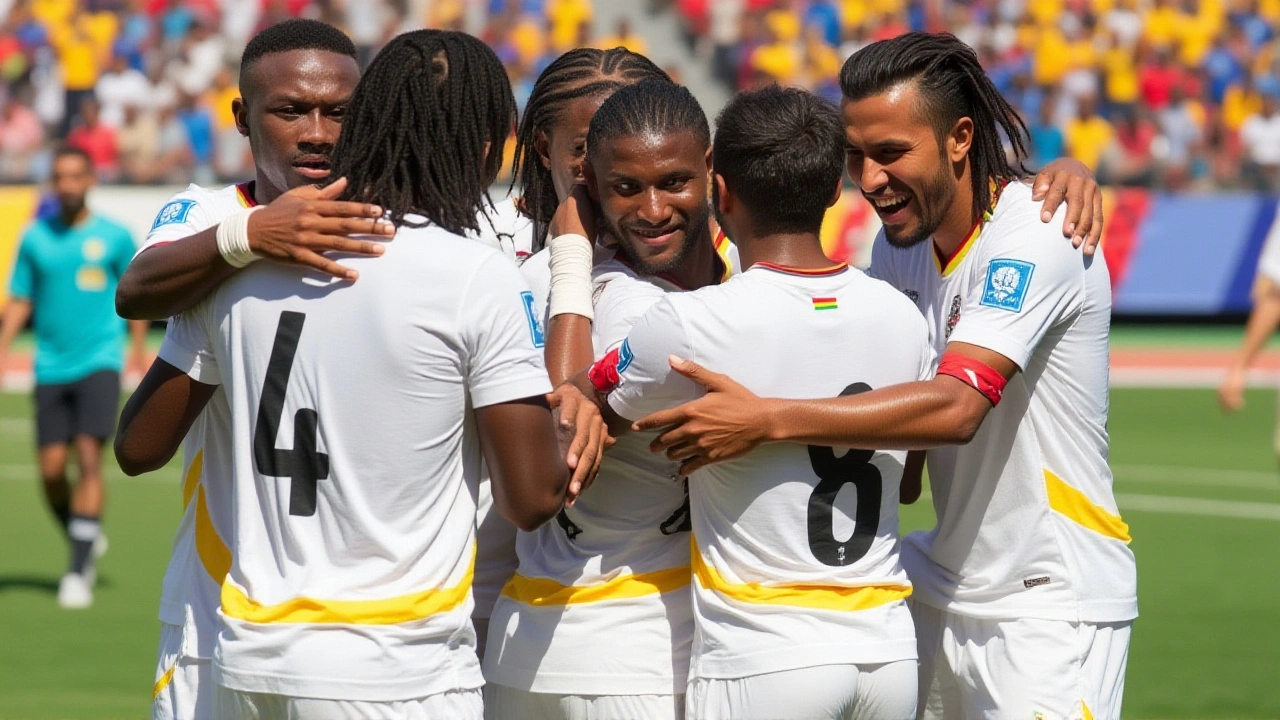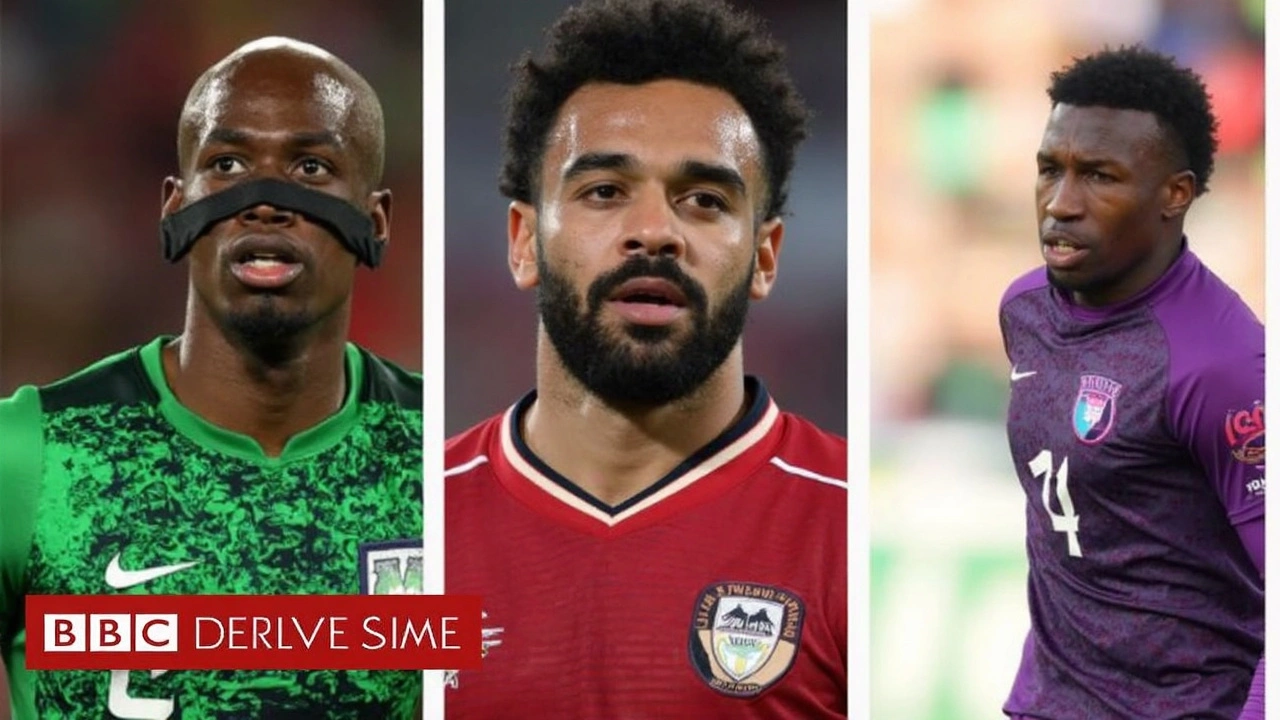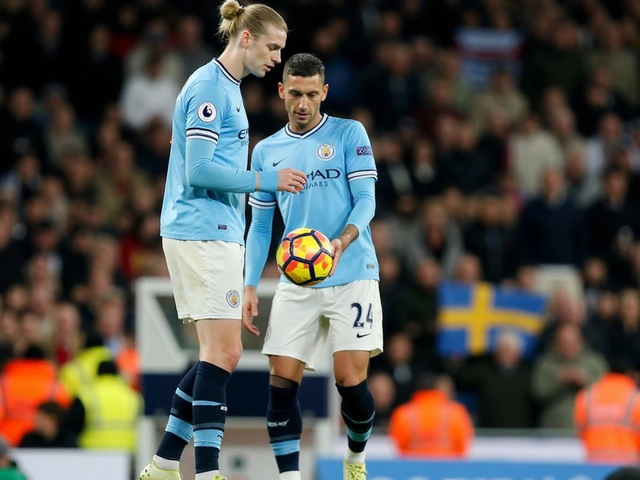When FIFA rolled out the latest round of World Cup 2026 qualifiers on October 8, 2025, fans across three continents found themselves glued to screens from Lobamba to Riyadh. Eleven matches under the Confederation of African Football (CAF), two fourth‑round clashes in the Asian Football Confederation (AFC), and four CONCACAF fixtures turned Wednesday into a global football carnival. The stakes? Every point edges a nation closer to one of the coveted slots in the 48‑team tournament set for summer 2026 in Canada, Mexico and the United States.
African drama unfolds across the continent
The CAF schedule read like a tour of the continent’s most iconic venues. In Somhlolo National Stadium, Eswatini salvaged a 2‑2 draw against Angola, a result that kept their hopes alive but left fans yearning for a win. Ethiopia edged Guinea‑Bissau 1‑0 at Kigali’s Stade Amahoro, a narrow victory that lifted the Ethiopian camp’s morale after a shaky start.
Tripoli’s 11 June Stadium witnessed a roller‑coaster when Libya held Cape Verde Islands to a 3‑3 stalemate, a match that highlighted Libya’s attacking firepower but also defensive frailties. Meanwhile, Ghana’s five‑goal demolition of the Central African Republic at the Stade d'Honneur Meknès in Morocco underscored why the Black Stars are early favourites for the African “group of death”. Coach Otto Addo praised his side’s “clinical finishing” after the victory.
Other notable results included Cameroon’s 2‑0 win over Mauritius in Saint Pierre, Mali’s 2‑0 triumph in N'Djamena, and Madagascar’s narrow 2‑1 win against Comoros in Abidjan. Attendance figures – 200 in Meknès, 567 in Abidjan, and 1,200 in Casablanca – hinted at a resurgence of fan enthusiasm after the pandemic lull.
Asia’s fourth‑round showdown: groups tighten
In the AFC’s fourth round, Group A’s host Saudi Arabia (the match took place in Riyadh’s Prince Faisal Stadium) edged Indonesia 3‑2, securing the first three points for the eventual group winner. Oman and Qatar, playing out a 0‑0 draw in Doha’s Al‑Thumama Stadium, remain dead‑locked, setting up a tense finale on October 11.
According to the AFC’s qualification format, the two group winners will lock in direct World Cup spots, while the runners‑up move on to a fifth‑round play‑off on November 13 and 18. “Every match feels like a final now,” said AFC secretary‑general Wong Chin Hung after the Qatar‑Oman stalemate.
CONCACAF’s evening of Caribbean clashes
CONCACAF pumped out four matches across the evening, with Jamaica taking on Trinidad and Tobago at 8:00 p.m. ET, and Curacao meeting Bermuda an hour later – venues remain undisclosed but both games were streamed live on regional networks. The marquee fixture at 10:00 p.m. ET featured Costa Rica hosting Haiti, while Honduras travelled to face Nicaragua. Early reports suggest a tight contest between Jamaica and Trinidad, with both sides needing three points to stay in the mix for the limited direct‑qualification spots.
Why the numbers matter: slot allocation and the road ahead
FIFA’s allocation gives Africa nine direct slots, Asia eight plus one inter‑confederation play‑off berth, and the CONCACAF region three direct places with an extra inter‑confederation chance. Europe dominates with 16 guaranteed spots, leaving the remaining 20 places up for grabs in fiercely contested qualifiers.
With 18 nations already through – a mix of hosts and early qualifiers – the matches on October 9 (additional CAF fixtures) and October 11 (UAE vs Oman, Iraq vs Indonesia) will further shape the knockout landscape. “Every goal changes the arithmetic,” noted Gianni Infantino, FIFA President, during a pre‑match press conference in Zurich.
Looking forward: next milestones
The next round of CAF games on Thursday, October 9, promises to feature high‑stakes clashes such as Nigeria versus Cameroon and Zambia versus Tanzania, matches that could seal direct qualification or force a play‑off path. In Asia, the decisive Group A and Group B encounters on October 11 will likely decide which teams head straight to the World Cup and which will battle for the play‑off slot.
For the Caribbean, the CONCACAF schedule continues on October 14 with the final round‑robin fixtures, after which the top two teams from each group will advance to the eighth‑round play‑offs.
Historical backdrop: the evolution of World Cup qualifying
Since the 2022 tournament, FIFA expanded the final tournament to 48 teams, prompting a reshuffle of continental quotas. Africa’s nine spots represent a modest gain from the six‑team allocation in 2018, reflecting the continent’s growing competitiveness. Asia’s eight‑plus‑one system mirrors a similar increase, while CONCACAF retained three direct slots but gained a clearer play‑off route.
Past cycles saw teams like Ghana and Nigeria dominate African qualifiers, but recent tournaments have witnessed surprise breakthroughs from nations like Egypt’s U‑23 side in 2022. The new format means more nations stay in contention deeper into the qualifying phase, which boosts fan engagement and commercial interest.
Frequently Asked Questions
How do the African results affect the race for the nine direct slots?
The CAF draws are organized into three‑team groups, with the group winner earning a direct berth. Ghana’s 5‑0 win puts them at the top of their group, while Ethiopia’s narrow victory over Guinea‑Bissau keeps them in contention for a second‑place play‑off. Teams that falter, like the Central African Republic, now face a longer path via the inter‑confederation playoffs.
What happens if Qatar and Oman remain tied after the final AFC matches?
A tied group leads to a play‑off between the second‑placed teams. The winner then moves to the fifth‑round inter‑confederation play‑off, where they could still secure a spot in the World Cup by beating a team from another confederation.
Which CONCACAF teams are most likely to qualify directly?
Historically, Mexico, the United States and Canada dominate, but the current cycle sees Jamaica, Costa Rica and Honduras fighting for the three direct places. Jamaica’s result against Trinidad and Tobago will be a key indicator of their chances.
Why is the World Cup 2026 expanding to 48 teams?
FIFA aimed to increase global representation, giving more nations a chance to experience the tournament’s economic and developmental benefits. The expansion also promises more matches, higher broadcast revenue, and a broader fan base.
When is the next inter‑confederation play‑off scheduled?
The inter‑confederation play‑offs are set for March 2026, featuring a single‑match knockout between the AFC runner‑up, the CONCACAF play‑off winner, the OFC champion and the fifth‑placed CONMEBOL side.








Ciara Russell-Baker
October 9, 2025 AT 02:23Africa’s qualifiers feel like a circus of under‑funded squads that keep getting tossed around by decent teams that could’ve been playing in a proper league. The 2‑2 draw between Eswatini and Angola? Just a sad reminder that the continent still battles infrastructure nightmares. Even the attendance numbers look like a joke, huh?
Aaron Samarita
October 9, 2025 AT 07:56The drama unfolding in Riyadh was nothing short of theatrical, with Saudi Arabia’s narrow 3‑2 victory over Indonesia bordering on a disaster. Every pass was a cliff‑hanger, and the tension could’ve been cut with a knife. This is the type of high‑stakes action that makes the qualifiers feel like a season finale, not a preliminary round.
Daisy Pimentel
October 9, 2025 AT 13:29One must ask whether we, as global citizens, are truly respecting the aspirations of these nations when we reduce their journeys to mere statistics. The narrow win by Ethiopia over Guinea‑Bissau is a testament to perseverance, yet the narrative often overlooks the moral weight of such triumphs. It is our ethical duty to celebrate these victories beyond the scoreboard.
Ellen Ross
October 9, 2025 AT 19:03When you examine the 3‑3 spectacle between Libya and Cape Verde, you see more than a match; you see a micro‑cosm of African football’s potential coupled with its persistent defensive frailties. The attacking flair showed off what could be a golden generation, yet the lapses in structure hint at deeper systemic issues – a paradox that must be addressed by federations.
Fabian Rademacher
October 10, 2025 AT 00:36Did you ever notice how the real power players manipulate the qualification schedule? The timing of the AFC fifth‑round play‑off aligns perfectly with certain political agendas, suggesting that the whole process might be engineered to favor specific markets. Keep your eyes open; there’s more than meets the eye.
Terrell Mack
October 10, 2025 AT 06:09Great to see Ghana’s five‑goal demolition; it shows the Black Stars are clicking on all cylinders. If they keep this momentum, the group of death could become just a group of awe. Keep trusting the process and cheering your squads, folks.
Dawn Waller
October 10, 2025 AT 11:43Well, isn’t it just spectacular??? The CONCACAF fixtures were streamed live, yet nobody bothered to mention the branding blitz that accompanied the matches-an obvious cash‑grab, of course. The Caribbean’s passion is real, but the corporate veneer is downright laughable.
Grace Melville
October 10, 2025 AT 17:16Nice summary! :)
Ashlynn Barbery
October 10, 2025 AT 22:49From an analytical standpoint, the allocation of nine direct slots to Africa reflects a commendable shift toward greater inclusivity. Nevertheless, the competitive balance remains delicate; nations must invest strategically in youth development to capitalize on this opportunity.
Sarah Graham
October 11, 2025 AT 04:23I completely agree with the previous point; fostering grassroots programs will be essential for sustainable success across the continent.
Jauregui Genoveva
October 11, 2025 AT 09:56Everyone’s hyped about the numbers, but let’s not forget the deeper cultural impact-societies unite when their teams fight for a spot. 🌍⚽️
Quinten Squires
October 11, 2025 AT 15:29The qualification process, as presented, is a labyrinthine construct that intertwines geopolitical considerations with sporting ambition, creating a mosaic of outcomes that are as unpredictable as they are compelling. Each match operates not merely as a contest of skill but as a micro‑economy where ticket sales, broadcasting rights, and sponsorship deals coalesce to influence national morale. When Ghana unleashed a five‑goal offensive, it didn’t merely dominate the scoreboard; it ignited a cascade of economic activity that rippled through local vendors, merchandise sellers, and even regional tourism operators. Meanwhile, the AFC’s dead‑lock between Oman and Qatar serves as a stark reminder that defensive stalemates can be just as financially lucrative as high‑scoring spectacles, as advertisers flock to fill airtime with tense, edge‑of‑your‑seat narratives. The African draw’s modest attendance figures, such as the 200 spectators in Meknès, belie a deeper issue of infrastructure investment, which, if left unaddressed, will perpetuate a cycle of underperformance on the global stage. Conversely, the surge in viewership for the CONCACAF Caribbean clashes illustrates how digital streaming platforms can democratize access, allowing diaspora communities to rally behind their teams despite geographic distance. Moreover, the expansion to a 48‑team World Cup fundamentally reshapes the competitive hierarchy, granting previously marginalized nations a realistic pathway to the finals, thereby altering talent pipelines and national team development strategies. The inter‑confederation play‑offs slated for March 2026 epitomize this shift, creating a crucible where the best of the second‑tier teams vie for a singular, coveted berth, intensifying the stakes beyond traditional regional qualifiers. In this intricate tapestry, every goal, every draw, and every administrative decision reverberates through a network of stakeholders whose interests converge on the singular goal of global football prominence. Thus, the qualifiers are not just matches; they are the foreground of a larger narrative in which sport, economics, and identity intersect in profound ways.
Tyler Manning
October 11, 2025 AT 21:03While the foregoing analysis attempts to romanticize the qualifiers, the reality is that many federations lack the disciplined governance needed to translate opportunity into success. Without stringent oversight, resources will continue to be misallocated, and the promised inclusivity remains a hollow promise.
james patel
October 12, 2025 AT 02:36From a metrics perspective, the variance in attendance across venues indicates a need for standardized fan engagement protocols. Leveraging data analytics can optimize stadium utilization and revenue streams for member associations.
Scarlett Mirage
October 12, 2025 AT 08:09One must consider the ethical implications of expanding the tournament; the sheer number of matches risks diluting the competition’s prestige, yet it simultaneously offers a platform for under‑represented nations to showcase their footballing ethos-an undeniable paradox that demands thoughtful reflection.
Lois Parker
October 12, 2025 AT 13:43The article drags on with too much filler and not enough insight into how these games actually affect the teams’ chances.